Category Archives: Test translation and localisation
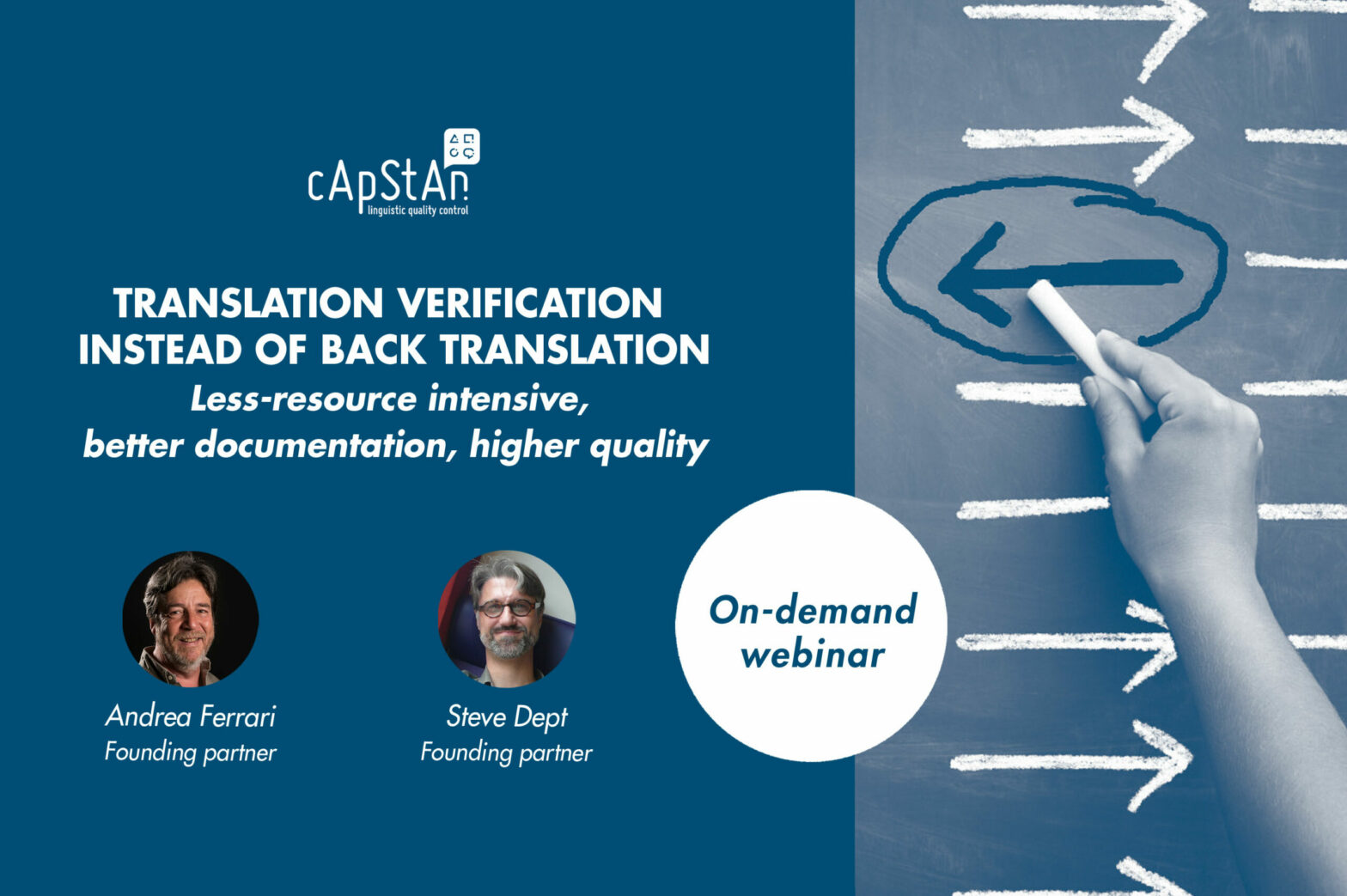
Translation Verification instead of Back Translation
Less-resource intensive | better documentation | higher quality Speakers: cApStAn’s founding partners Steve Dept and Andrea Ferrari Recorded Live on Sept. 22, 2021 | Duration: 1 hr. In this webinar, the speakers will tell you why experts judge that the back translation design is inadequate, but also why the gold standard does not need to be costlier. – To …
“Translation Verification instead of Back Translation”
Read More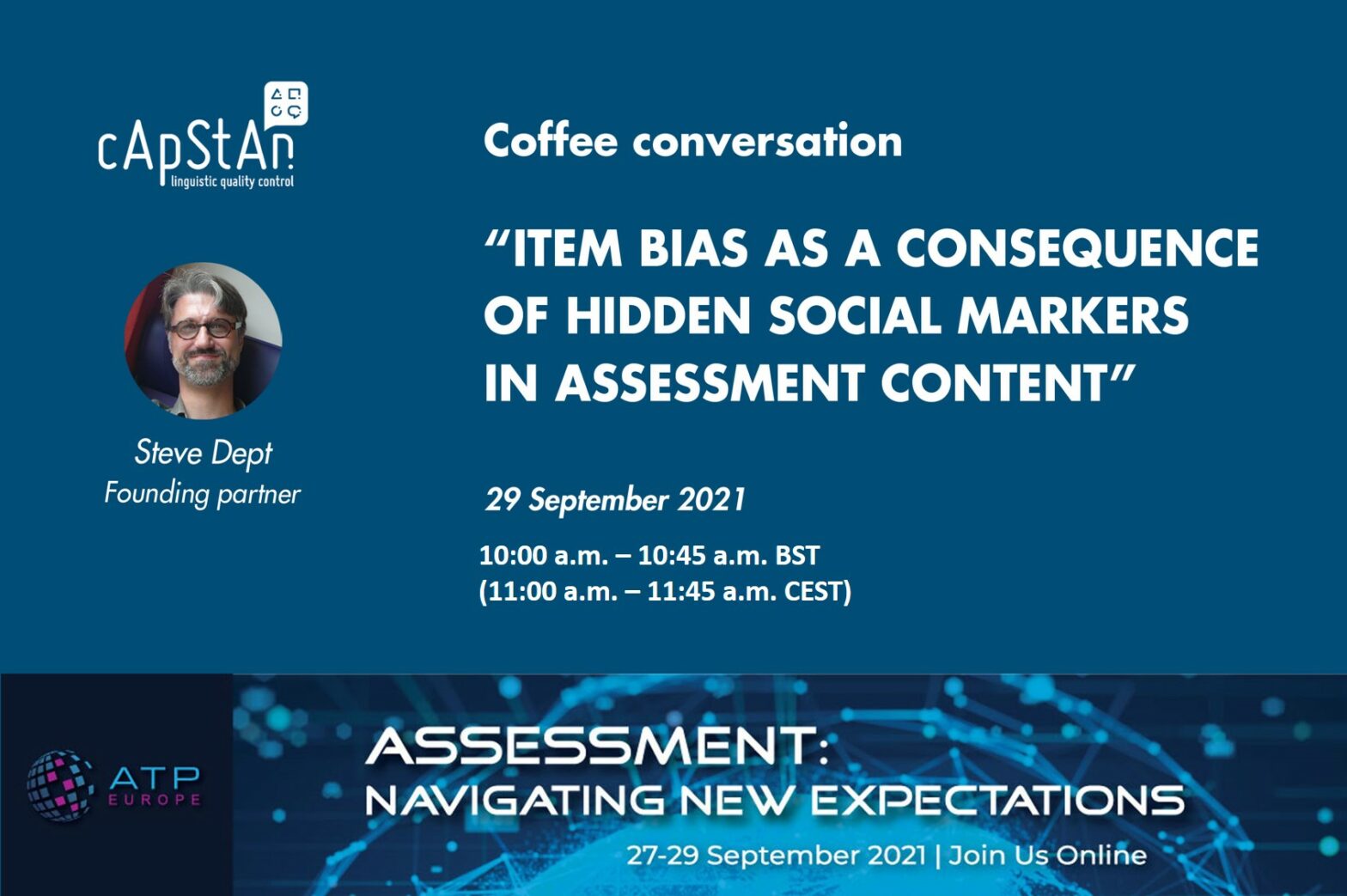
Item bias as a consequence of hidden social markers in assessment content
If part of the assessment content is loaded with (hidden) social markers that tend to privilege candidates from certain types of socio-economical backgrounds, this may introduce construct-irrelevant variance and item bias. cApStAn founder Steve Dept’s coffee conversation at E-ATP 2021 is conceived as an exchange on how to ensure that the content of an assessment …
“Item bias as a consequence of hidden social markers in assessment content”
Read More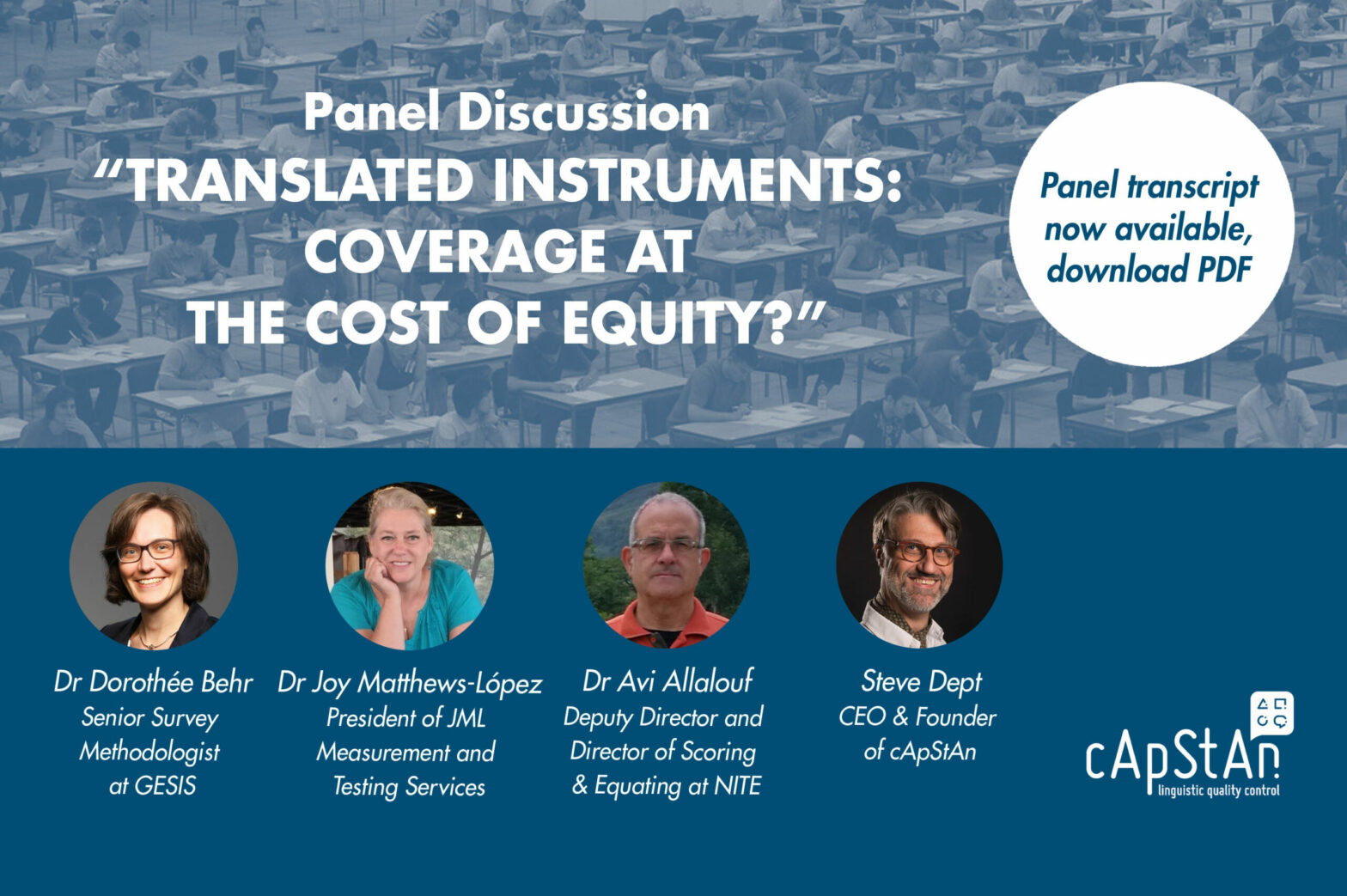
Detailed Transcript: Translated Instruments: Coverage at the cost of Equity?
Standardized tests and questionnaires are used in a variety of contexts: admission to university, certification, hiring, or collecting information about background variables, for example. Tests and surveys may come in more than one language. While this broadens the coverage, it may create disparities if the different language versions are not equivalent. cApStAn’s May 5 online …
“Detailed Transcript: Translated Instruments: Coverage at the cost of Equity?”
Read More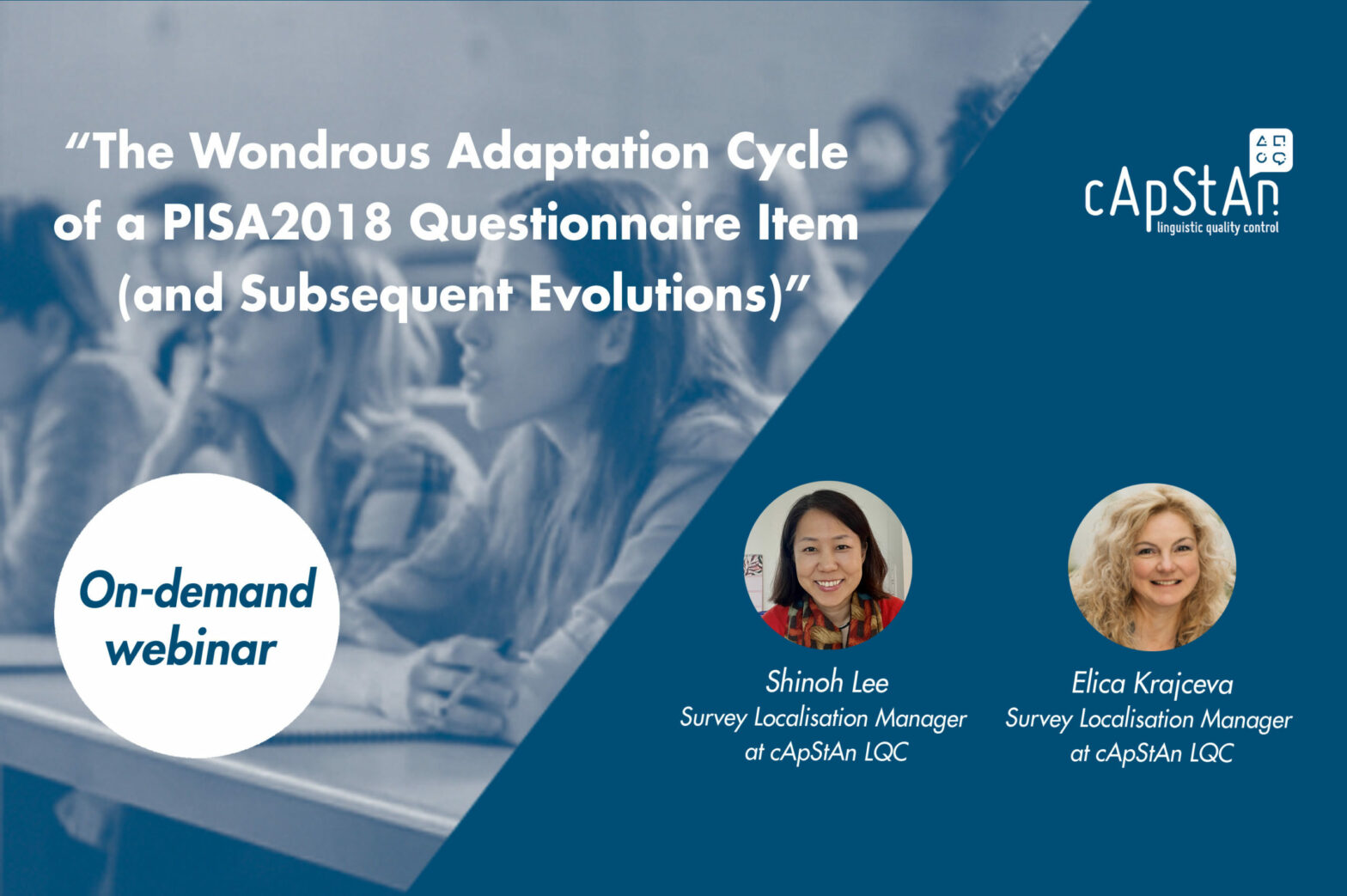
The Wondrous Adaptation Cycle of a PISA2018 Questionnaire Item (and Subsequent Evolutions)
The Wondrous Adaptation Cycle of a PISA2018 Questionnaire Item (and Subsequent Evolutions) Speaker: Shinoh Lee, Survey Localisation Manager at cApStAn LQC Contributor: Elica Krajçeva, Survey Localisation Manager at cApStAn LQC Recorded on 09.03.2021 | Duration: 20 minutes Sophisticated translation designs have become the norm in high-stakes tests and are essential in order to collect comparable …
“The Wondrous Adaptation Cycle of a PISA2018 Questionnaire Item (and Subsequent Evolutions)”
Read More
The Role of Linguistic Quality Assurance after Field Trialling
Re-edited by Andrea Ferrari, Co-founder at cApStAn, from a presentation made at CSDI Washington 2012 by Steve Dept, Andrea Ferrari and Juliette Mendelovits The design of major international comparative studies such as OECD’s PISA (Programme for International Student Assessment) or IEA’S TIMSS (Trends in International Mathematics and Science Study) includes a Field Trial (FT) phase …
“The Role of Linguistic Quality Assurance after Field Trialling”
Read More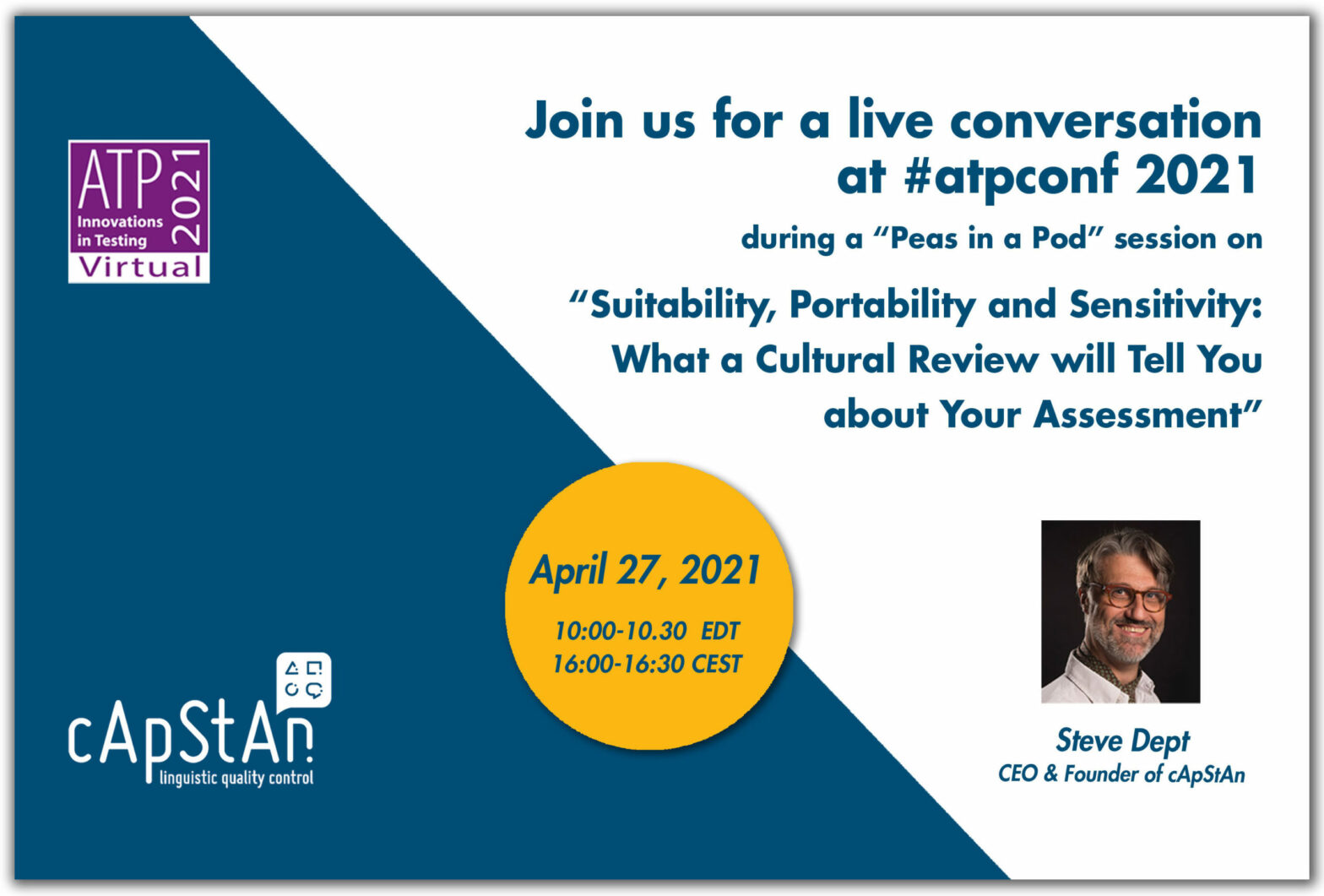
Suitability, Portability and Sensitivity – What a Cultural Review will Tell You about Your Assessment
An assessment is designed within a given cultural environment. If you plan to administer the test in regions with different cultural backgrounds, how do you evaluate the cultural divide? Try a cultural review, even if the test is to be delivered in English only but, say, in the UAE or in South Africa. Culture may …
Read More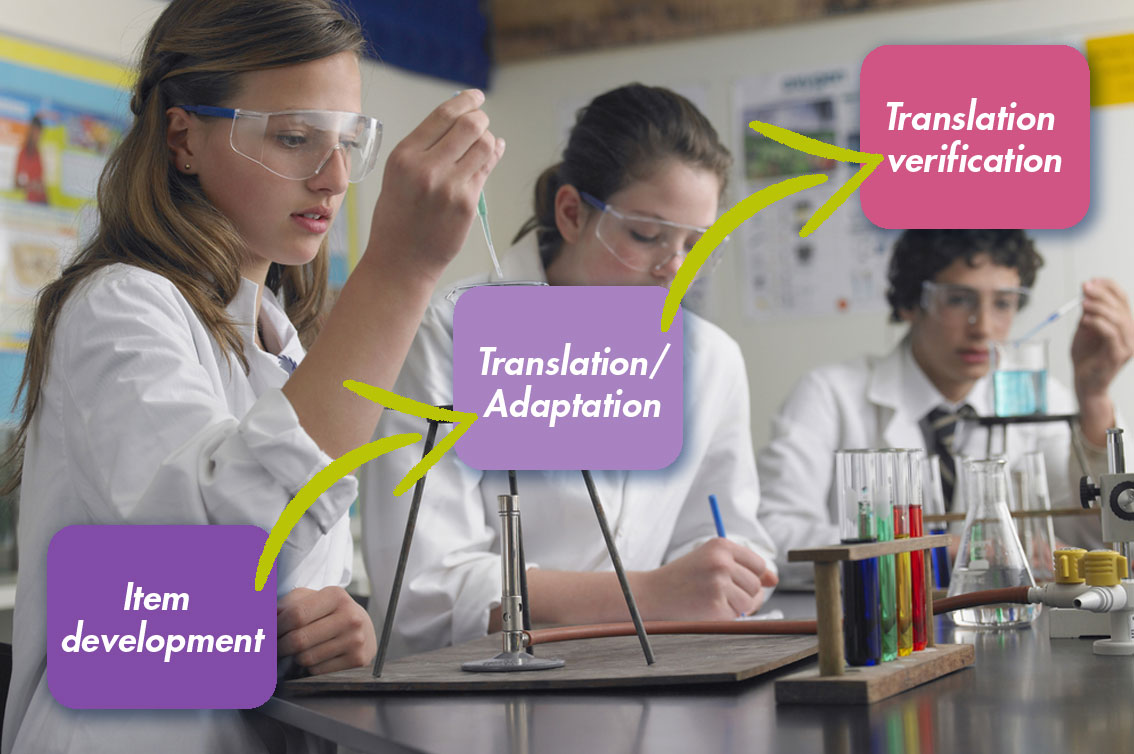
The translation and adaptation journey of a TIMSS grade 8 science item
by Pisana Ferrari – cApStAn Ambassador to the Global Village The IEA’s Trends in International Mathematics and Science Study (TIMSS) is a series of international assessments of the mathematics and science knowledge of students around the world, administered every four years. TIMSS 2019 was conducted in 64 countries and 8 benchmarking systems. The outcomes of …
“The translation and adaptation journey of a TIMSS grade 8 science item”
Read More
What are “intervention categories” and how can revisers use them to improve translation quality?
by Pisana Ferrari – cApStAn Ambassador to the Global Village How do you define “translation quality”? How can it be measured? In a recent live webinar cApStAn’s CEO Steve Dept explained how “intervention categories” used in a translation verification process can help report on translation quality in a standardized way and generate meaningful statistics. Translation …
“What are “intervention categories” and how can revisers use them to improve translation quality?”
Read More
Trend Measurement in International Assessment Surveys
by Andrea Ferrari – Senior Associate In international surveys in general and in comparative assessments in particular, investigators are interested in collecting data about knowledge, skills and competences of a given population at a given point in time. In addition, if periodical data collections are planned, it is of great interest to also measure change …
“Trend Measurement in International Assessment Surveys”
Read More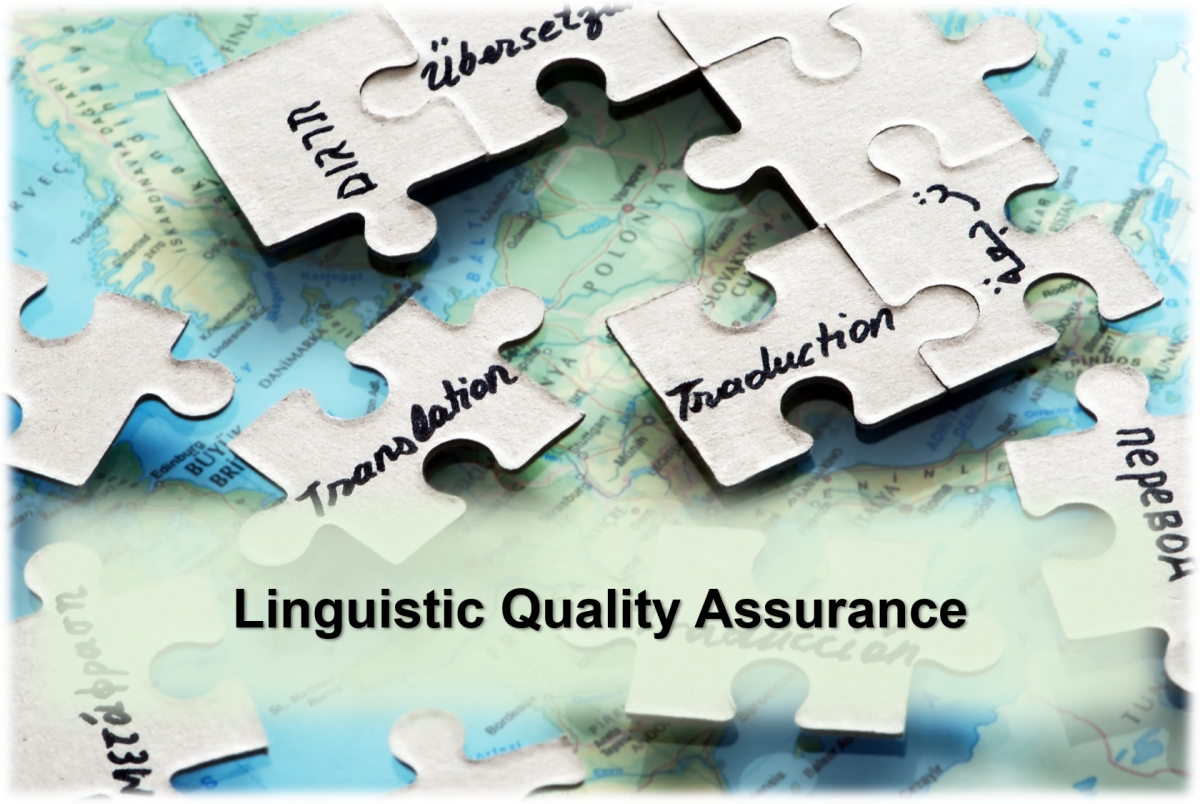
The Chaos Management Skills Assessment Series: A Test Translation Case Study Episode 4 – Linguistic Quality Assurance and Optical Check
by Steve Dept, cApStAn CEO Readers of this informative series on good practice in test translation are aware that the Chaos Management Skills Assessment is a fictitious project, which we set up for the exclusive purpose of the series. The purpose is to illustrate the complexity of test translation and the added value of a …
Read More
The Chaos Management Skills Assessment Series: A Test Translation Case Study Episode 3 – Translation Technology and Support to translators
by Steve Dept, cApStAn CEO By now, readers of this informative series on good practice in test translation are aware that the Chaos Management Skills Assessment is a fictitious project, which we set up for the exclusive purpose of the series. The purpose is to illustrate the complexity of test translation and the added value …
Read More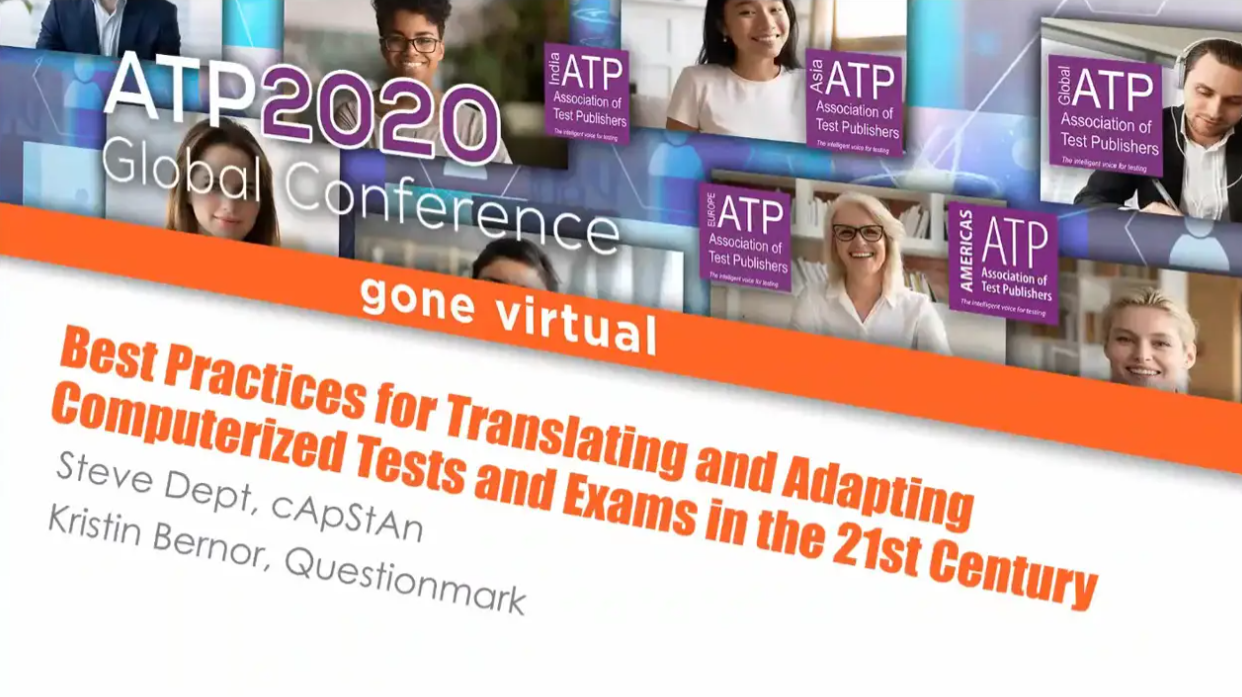
Best Practices for Adapting and Translating Computerized Tests and Exams in the 21st Century
by Kristin Bernor, Questionmark and Steve Dept, cApStAn It takes more than a good translation provider and a good platform to ensure that an assessment can reliably measure cognitive and non-cognitive skills across languages and cultures. Of course, most sophisticated testing environments support multiple languages, but they may fail to enable workflows that harness the …
“Best Practices for Adapting and Translating Computerized Tests and Exams in the 21st Century”
Read More